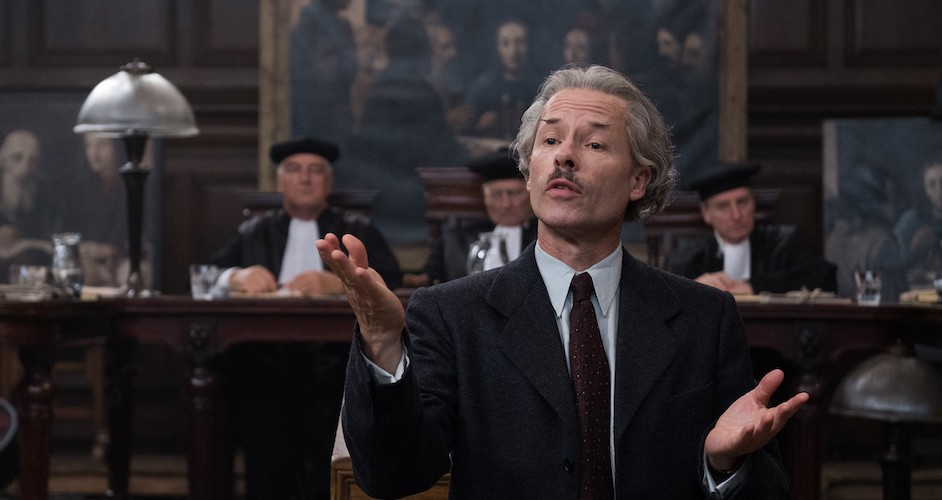"Painting is just another way of keeping a diary," Pablo Picasso said. If that's true, the paintings of Han van Meegeren should top the New York Times all-time bestseller list.
Van Meegeren, a talented but underachieving artist from Amsterdam, stumbled from obscurity to national fame in postwar Netherlands when he was arrested for selling priceless Vermeer paintings to the Nazis. That accusation alone would have been enough to guarantee his celebrity, but it was his explanation of his apparent misdeeds that caught the world's attention.
If you're familiar with van Meegeren, The Last Vermeer won't spring many surprises. And unlike the exquisite creations of Vermeer, the film is a bit rough around the edges. But the fascinating story and the script's unusual decision to focus more on the people who defended van Meegeren, rather than the painter himself, make it worth a watch.
Directed by first-time helmer Dan Friedkin (no relation to William Friedkin) and penned by John Orloff, Mark Fergus and Hawk Ostby, the drama is based on the biography The Man Who Made Vermeers by Jonathan Lopez. The film premiered at last year's Telluride Film Festival under a different title, Lyrebird, which refers to an Australian fowl famous for its mimicry. If those facts don't give you a hint of the plot, this movie is probably not your bag.
As van Meegeren, Guy Pearce is memorable but a bit on the nose. He's clearly having a blast, but his flamboyance wears thin at times. As Joseph Piller (van Meegeren's principal defender), Danish actor Claes Bang (The Square, which Friedkin produced) is more palatable and relatable. His performance is further buoyed by a tender and understated turn by Luxembourgian actress Vicky Krieps (The Phantom Thread), one of the best performers you might not yet know. (She's worth your time.) And it's enhanced even further by fellow Dane Roland Moller, who plays Piller's right-hand man. (Their relationship will conjure memories of Maj. Calloway and Sgt. Paine from The Third Man, which was filmed, of course, in the real ruins of World War II.)
Speaking of The Third Man, another star of The Last Vermeer is the cinematography, particularly the lighting, by Remi Adefarasin, assisted nicely by Arthur Max's production design, though Amsterdam seems unrealistically tidy considering the war ended just days before the events of the film. (Not so Rotterdam, which is naturalistically portrayed as having been bombed almost to oblivion.)
Yet the mood of Amsterdam is appropriately manic, with the mob demanding speedy revenge on anyone suspected of collaborating with Germans. The way the crowd is shown despising and then immediately embracing van Meegeren is particularly heavy-handed. (Then again, we've all been reminded of the bipolarity of the mob in recent months, so perhaps the characterization isn't too far off.)
Also somewhat maladroit is Friedkin's handling of those who oppose the coddling defense of van Meegeren. Indeed, with no actual Nazis to portray, the film uses these Dutchmen as their stand-ins, seemingly plucked from a B-movie. This broad characterization is probably intended to highlight the thin line between good and evil, Allies and Axis. Nevertheless, the unsubtle acting does sometimes rob the film of believability.
The film's triumph is not its reintroduction of van Meegeren to the world, though that is commendable. Instead, it's the conversation it fosters about art itself. Why is a 17th-century painting superior to a modern one of similar quality? Why are certain artists celebrated and others ignored just because a small group of critics decreed it? And why should you care about what I'm writing now? Maybe you shouldn't. I guess I'm giving The Last Vermeer the last word.


